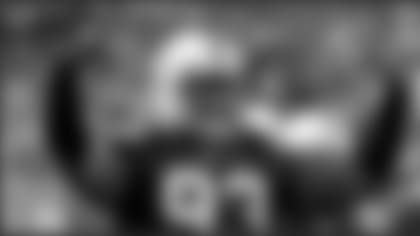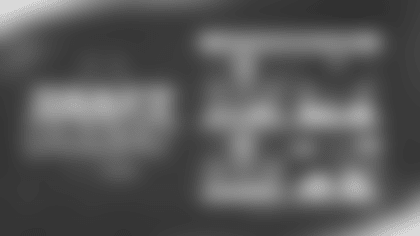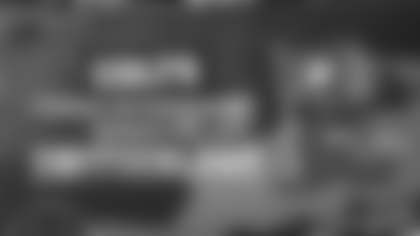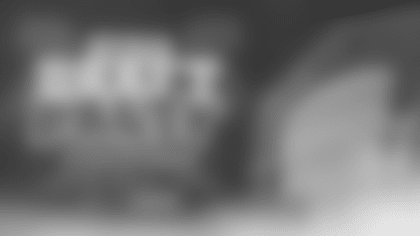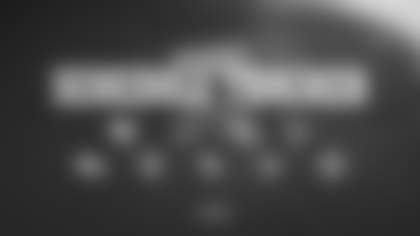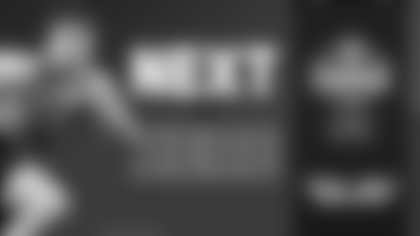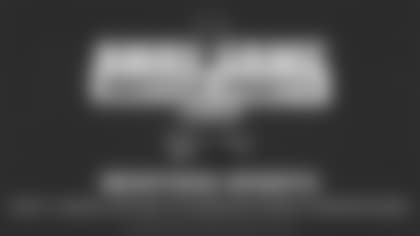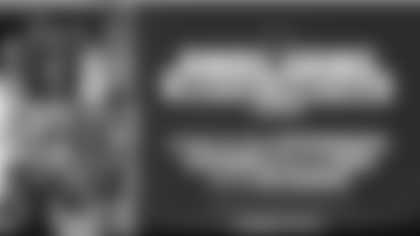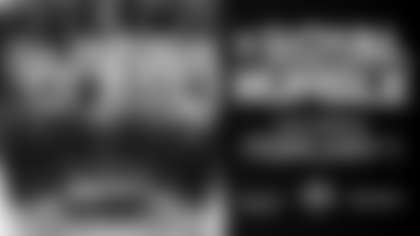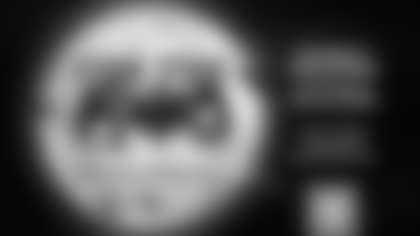Colts Head Coach Jim Caldwell Discusses the Team's
Defensive End Position
INDIANAPOLIS – They have the numbers.
But when it comes to Dwight Freeney and Robert Mathis, the Colts' Pro Bowl, elite-level defensive ends, while they indeed have compiled career statistics at a historic pace, Colts Head Coach Jim Caldwell said the reality is there's more to each player.
And that's key, Caldwell said.
Because while sacks are imant for pass-rushing defensive ends, when those sacks come for Freeney and Mathis – and how the duo plays when they don't – is sometimes equally important.
In the case of Freeney and Mathis, the level of play is high no matter the statistics.
And Caldwell said that speaks volumes about the tandem.
"Both guys are still guys who do their job and do it very well," Caldwell said recently in an interview for this story on the Colts' defensive ends, part of a position-by-position series scheduled to run on Colts.com this month.
"They have a great passion to play. They're extremely effective. No question."
That effectiveness, Caldwell said, certainly includes the ability to register sacks.
Freeney, the Colts' all-time career sacks leader, registered 13.5 sacks this past season and had 20 pressures, making the Pro Bowl for a second consecutive season and a fifth time in eight NFL seasons. He also forced a fumble, bringing his career total in the category to 36.
Mathis, second on the team's all-time sacks list, registered 9.5 sacks and a team-high 23 pressures this past season. He made his second consecutive Pro Bowl and also forced five fumbles to bring his career total in the category to 35.
But Caldwell said as much as how many sacks the pair registers, what's as important is when they make them.
"They make the plays at critical times," Caldwell said. "When you're ahead, and you're trying to get the ball back, oftentimes those guys step up and create sacks, sack-fumbles. They turn the ball over in critical situations that give us the opportunity to come back, or to thwart drives.
"That's really one of the things I think you find about both of those guys, is that at critical times they don't disappear. They show up. They're very, very finely tuned athletes, but they're also great competitors.
"When the game's on the line, they look for ways to take it over."
Caldwell said as has been the case in recent seasons, teams last year often ran more often against the Colts than they usually might, with the idea being to prevent Mathis and Freeney from getting into situations in which they could focus solely on rushing the passer. That sometimes limits sack opportunities for Freeney and Mathis, but it doesn't always hurt the Colts' defense.
"When you get two guys who are as effective as they are at what they do, people game plan for them to handle them," Caldwell said. "They have to.
"That helps us. It gives (middle linebacker) Gary Brackett a chance to maybe get some one-on-ones, to get some pressure. It gives (defensive tackle) Dan Muir a chance to create a little pressure. It creates so many opportunities that exist because of the fact that people have to handle them.
"They oftentimes assign two people to them, particularly on passing downs."
The Colts, who after the season allowed longtime veteran end Raheem Brock to leave as a free agent, in the first round of the 2010 NFL Draft selected defensive end Jerry Hughes, who led the nation in sacks as a junior at Texas Christian University two seasons ago.
The Colts, President Bill Polian said following the draft, long had sought a third pass rusher to complement and relieve Freeney and Mathis. Caldwell said during OTAs that not only could Hughes fill that role, but that the team was exploring ways to use Hughes with Freeney and Mathis in the game.
"He does give us more options," Caldwell said of Hughes. "We can create maybe some situations where all three of them are in the ballgame at the same time that may be pretty unique. It also gives us a buffer if we're in a situation where either one can't play. We still can have two edge rushers that can do some damage."
And while rookie pass rushers historically can take time to get acclimated, Caldwell said of Hughes, "We don't place any limitations on anybody."
"It depends on the year, the situation, the person," Caldwell said. "We expect the best, and we anticipate he's going to be an effective guy who can run. He has shown he can run. He has speed and power. He just has to learn. He has to learn our system, learn how we do things.
"(Defensive line coach) John (Teerlinck) has been working with outstanding pass rushers for his entire career. The main thing about them is they're all unique. They're all authentic. They have their own niche, and we have to understand where his niche is. What does he do best? What's most effective for him?"
The Colts in addition to Freeney, Mathis and Hughes also have fourth-year veteran Keyunta Dawson at the position, as well as tackle Eric Foster, who Caldwell said can play end. That duo, Caldwell said, could help fill the role previously played by Brock, and the Colts also drafted end Ricardo Mathews from Cincinnati in the seventh round.
From somewhere – or perhaps from some combination – in that group, Caldwell said a replacement for Brock and the role he played can emerge.
"I think you can possibly get that from a number of our ends," Caldwell said. "Eric Foster is one of those guys, a combination of strength and power. He gives you a little different type pass rush skill than Dwight, Robert and Jerry, but he can still be very effective.
"Dawson gives you that as well – maybe some of the same type of things in terms of strength and power. He can give you inside rush, move around."


